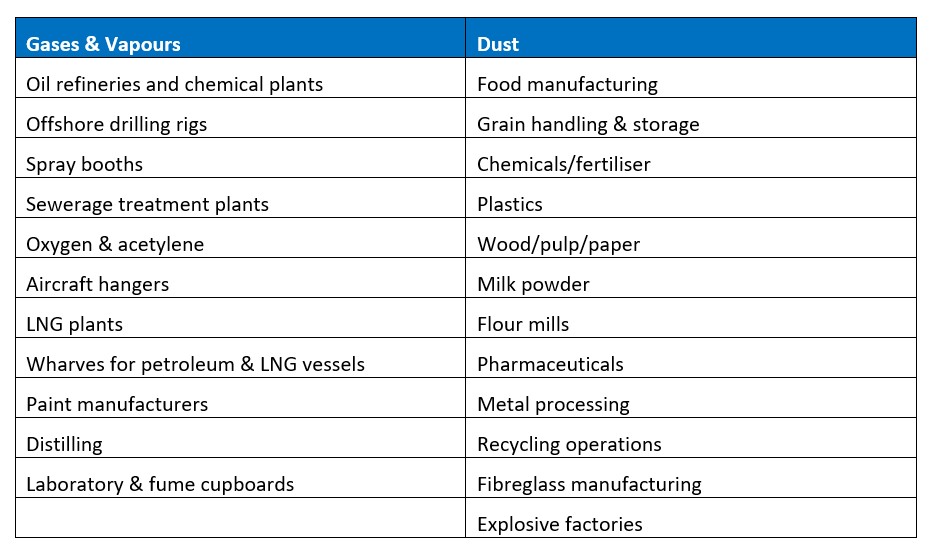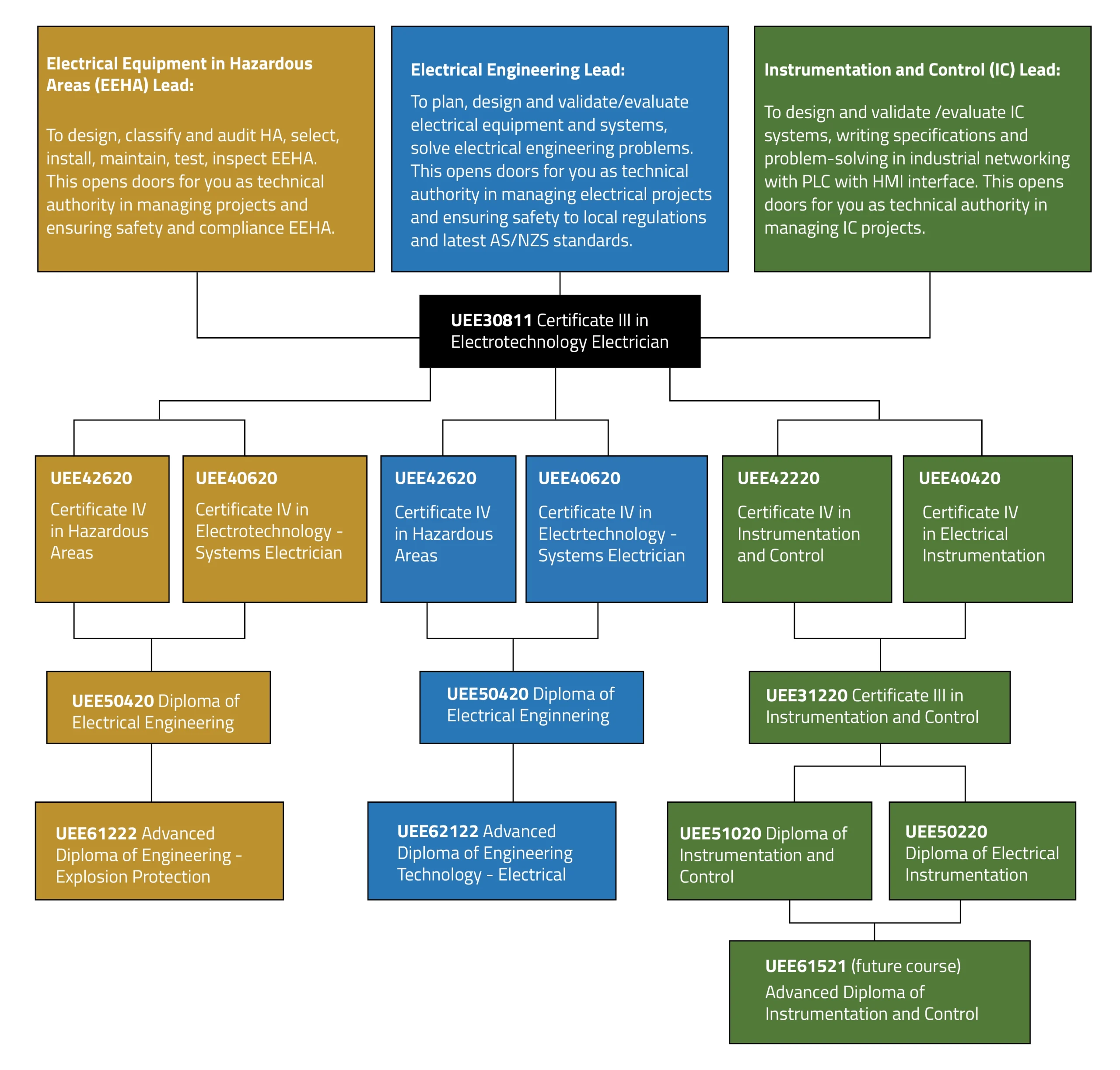The Main Principles Of Roar Solutions
Wiki Article
Rumored Buzz on Roar Solutions
Table of ContentsSome Known Details About Roar Solutions Roar Solutions Fundamentals ExplainedRoar Solutions for Dummies
In such an ambience a fire or explosion is feasible when three standard conditions are satisfied. This is frequently referred to as the "harmful area" or "burning" triangle. In order to protect installations from a possible explosion a technique of evaluating and identifying a possibly hazardous area is needed. The objective of this is to ensure the appropriate selection and installation of equipment to eventually avoid an explosion and to guarantee safety of life.
(https://pastebin.com/u/roarsolutions)
No equipment should be mounted where the surface temperature level of the tools is better than the ignition temperature of the provided hazard. Below are some typical dust hazardous and their minimum ignition temperature level. Coal Dust 380C 225C Polythene 420C (thaws) Methyl Cellulose 420C 320C Starch 460C 435C Flour 490C 340C Sugar 490C 460C Grain Dirt 510C 300C Phenolic Resin 530C > 450C Aluminium 590C > 450C PVC 700C > 450C Residue 810C 570C The chance of the risk existing in a concentration high enough to trigger an ignition will differ from location to location.
In order to categorize this danger a setup is separated right into locations of threat relying on the amount of time the hazardous is existing. These areas are referred to as Areas. For gases and vapours and dirts and fibers there are 3 zones. Zone 0 Area 20 A dangerous environment is extremely likely to be present and might exist for long periods of time (> 1000 hours per year) or perhaps constantly Zone 1 Zone 21 An unsafe environment is feasible yet unlikely to be existing for extended periods of time (> 10 450 C [842 F] A classification of T6 indicates the minimum ignition temperature level is > 85 C [185 F] Hazardous location electric equipment maybe developed for use in greater ambient temperatures. This would certainly showed on the rating plate e.g. EExe II C T3 Ta + 60C( This suggests at 60C ambient T3 will certainly not be exceeded) T1 T1, T2, T3, T4, T5, T6 T2 T2, T3, T4, T5, T6 T3 T3, T4, T5, T6 T4 T4, T5, T6 T5 T5, T6 T6 T6 A T Course score of T1 implies the maximum surface temperature created by the tool at 40 C is 450 C. Assuming the associated T Class and Temperature level rating for the tools are appropriate for the area, you can always make use of a tool with a more rigid Department ranking than needed for the location. There isn't a clear solution to this inquiry unfortunately. It actually does depend on the sort of tools and what repair services require to be accomplished. Tools with certain test treatments that can not be done in the area in order to achieve/maintain third event ranking. Should come back to the factory if it is before the devices's service. Field Repair Work By Authorised Employee: Complicated testing may not be needed nevertheless certain procedures may need to be followed in order for the equipment to maintain its 3rd party score. Authorized personnel should be used to do the job appropriately Repair have to be a like for like substitute. New component should be taken into consideration as a direct substitute needing no unique screening of the devices after the fixing is full. Each piece of devices with a harmful score must be examined separately. These are described at a high level listed below, but also for even more thorough info, please refer directly to the guidelines.
The 5-Minute Rule for Roar Solutions
The tools register is an extensive database of equipment records that includes a minimum collection of fields to determine each product's area, technical parameters, Ex-spouse category, age, and environmental data. This info is important for tracking and managing the tools efficiently within hazardous areas. In comparison, for regular or RBI sampling examinations, the grade will be a mix of In-depth and Close evaluations. The proportion of Detailed to Close inspections will be figured out by the Devices Threat, which is assessed based upon ignition risk (the possibility of a resource of ignition versus the chance of a combustible atmosphere )and the hazardous location classification( Zone 0, 1, or 2). This variation will additionally affect the resourcing demands for job prep work. As soon as Whole lots are specified, you can establish tasting strategies based upon the sample dimension of each Whole lot, which describes the number of arbitrary devices items to be examined. To establish the needed sample dimension, 2 aspects need to be evaluated: the size of the Great deal and the category of assessment, which suggests the level of effort that ought to be applied( lowered, regular, or raised )to the evaluation of the Lot. By integrating the group of evaluation with the Great deal size, you can then develop the ideal denial standards for a sample, implying the allowed number of faulty items located within that example. For even more details on this process, please refer to the Power Institute Standards. The IEC 60079 typical recommends that the maximum interval between inspections must not exceed three years. EEHA assessments will Roar Solutions likewise be performed outside of RBI projects as part of arranged upkeep and tools overhauls or repair services. These assessments can be credited toward the RBI example dimensions within the affected Whole lots. EEHA examinations are carried out to recognize mistakes in electric equipment. A heavy scoring system is vital, as a single item of equipment may have numerous faults, each with varying levels of ignition risk. If the mixed score of both inspections is less than two times the mistake score, the Whole lot is considered acceptable. If the Lot is still taken into consideration inappropriate, it should undertake a full evaluation or reason, which may cause more stringent evaluation methods. Accepted Lot: The root causes of any mistakes are determined. If a typical failing setting is found, extra equipment might require maintenance. Faults are classified by extent( Security, Integrity, Housekeeping ), making sure that immediate issues are assessed and dealt with without delay to minimize any type of effect on safety and security or procedures. The EEHA data source need to track and videotape the lifecycle of mistakes in addition to the rehabilitative actions taken. Carrying out a durable Risk-Based Evaluation( RBI )technique is critical for making sure compliance and security in handling Electric Equipment in Hazardous Locations( EEHA) (eeha). Automated Mistake Rating and Lifecycle Management: Effortlessly take care of mistakes and track their lifecycle to enhance examination precision. The intro of this assistance for risk-based assessment better reinforces Inspectivity's setting as a best-in-class solution for regulatory conformity, along with for any asset-centric evaluation use situation. If you are interested in discovering more, we welcome you to request a demonstration and uncover just how our option can change your EEHA administration processes.
Getting My Roar Solutions To Work

In terms of explosive danger, a dangerous area is an atmosphere in which an explosive atmosphere exists (or may be anticipated to be existing) in amounts that need special precautions for the building and construction, setup and usage of devices. eeha training. In this article we check out the obstacles encountered in the office, the danger control measures, and the required competencies to work safely
It is an effect of modern-day life that we make, save or deal with a series of gases or liquids that are regarded combustible, and a series of dusts that are considered flammable. These compounds can, in specific conditions, form explosive ambiences and these can have significant and terrible repercussions. The majority of us know with the fire triangle get rid of any type of one of the 3 elements and the fire can not take place, yet what does this mean in the context of unsafe areas? When damaging this down right into its most basic terms it is essentially: a combination of a specific quantity of launch or leak of a specific compound or material, combining with ambient oxygen, and the presence of a resource of ignition.
In many instances, we can do little concerning the levels of oxygen in the air, but we can have considerable impact on resources of ignition, for example electrical equipment. Harmful locations are recorded on the harmful area classification drawing and are identified on-site by the triangular "EX-SPOUSE" sign. Here, amongst various other vital info, zones are divided right into three kinds depending upon the hazard, the probability and duration that an explosive atmosphere will certainly exist; Zone 0 or 20 is considered one of the most hazardous and Area 2 or 22 is deemed the least.
Report this wiki page